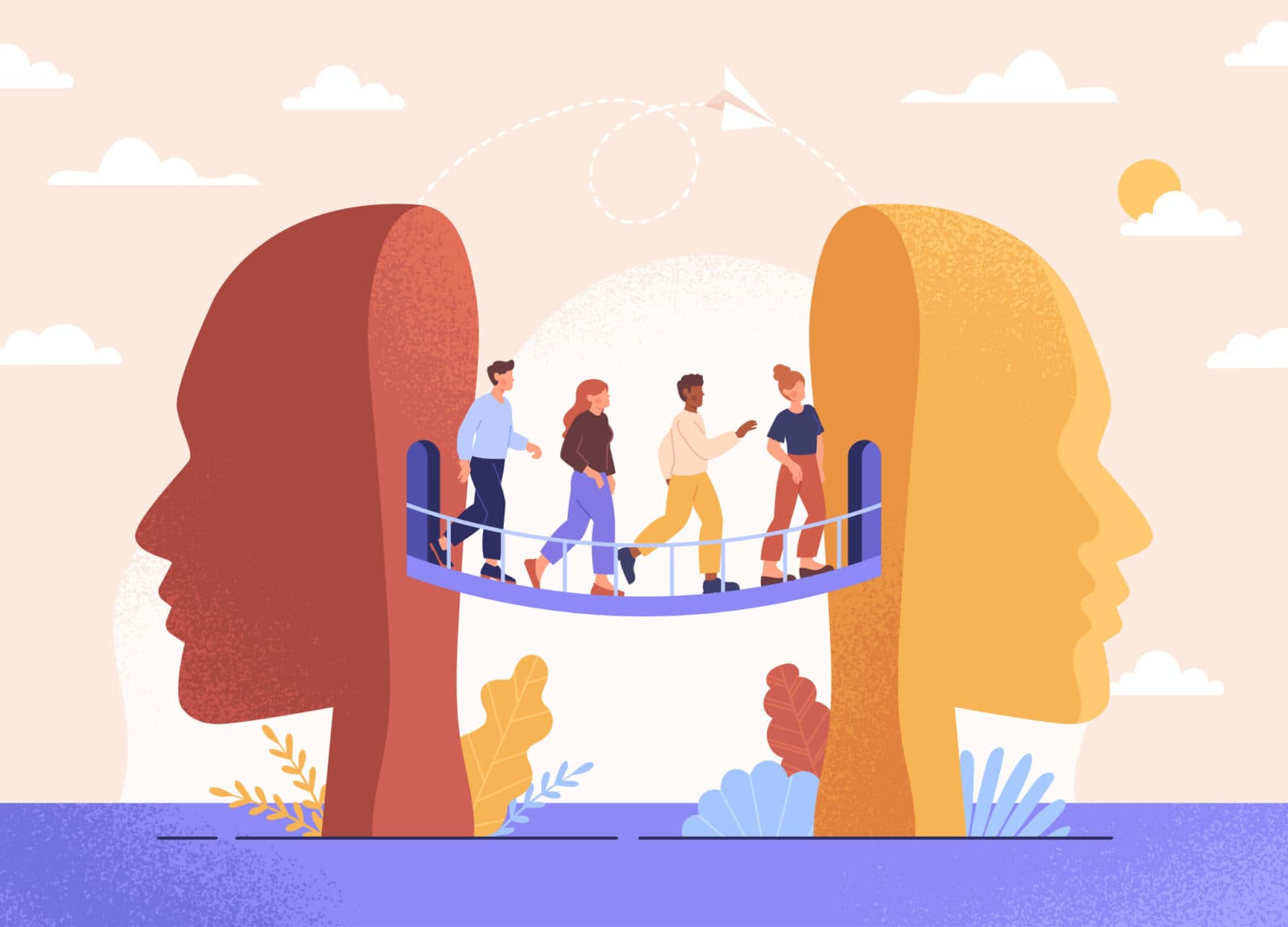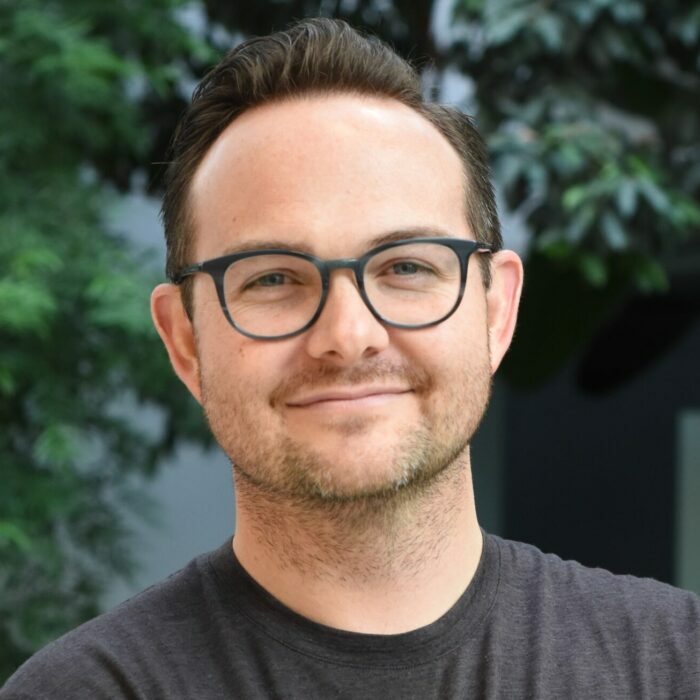Bridging Neuroscience and Bioethics
by Sally Johnson
Lomax Boyd is exploring new pathways to engage the public about scientific discoveries within neuroscience and beyond

The Author
As a neurobiologist by training, Lomax Boyd’s laboratory research involved exploring human origins and how the human brain evolved and developed into its current size, structure, and complexity.
This work centered on developing humanized mouse models and, while he and colleagues discovered innovative and novel regulatory gene mechanisms, the public wasn’t overly interested in their findings when they read about them. Instead, the most salient part to them were moral implications of what they were doing and how they were going about it.

“It was quite surprising to me because I never had any training in bioethics or real awareness of how science impacts diverse publics or society at large,” says Boyd, who is now the Berman Institute Civic Science Fellow at Johns Hopkins University in partnership with the Kavli Neuroscience Discovery Institute. “It was a watershed moment for me to explore the pathways for understanding science within this context, in particular the social implications of ethical questions that science raises but also the potential for science to inform ethical questions.”
Boyd aims to answer the key question: How can scientists reflect diverse public perspectives in scientific research and training?
“Our goal is to prevent unnecessary polarization and to build interest and familiarity with what’s happening within neuroscience, but also to build trust,” he says. “A big factor in whether people support emerging areas of science is whether they think scientists share their values or they trust them. This shapes how society views, interacts with, and responds to science.”
Engaging the publics
You may start hearing more about “publics” as the plural of the public, because especially within the U.S., the context is “a heterogeneous, ever-changing social community,” explains Boyd. “We’re trying to understand the public writ large.”
If you look at quantitative sociology research, any self-identifying group is composed of people who hold a wide range of beliefs. Even within the group of conservative protestants, for example, there are a range of beliefs—although they may share a common identifier relevant to how they view science. “The key part of understanding publics is figuring out what these variations are and how they inform their views on science,” says Boyd.
But for neuroscience, and human brain models, in particular, what are the public’s relevant values and beliefs? The area that academic philosophers or professional neuroscientists often speculate is of most concern for the public is consciousness: What is it, and if you’re building an ex vivo (outside the body) model of the human brain, when are these models sufficiently large and physiologically complex to constitute a shift in moral status?
Human brain organoids
Boyd’s current focus is on human brain organoids (a tiny model of a brain in a dish that contains genetic information, which can be created via cells from a cheek swab or a biopsy): When is it no longer a cell culture and sufficiently representative of the human brain and its activities that we should consider its moral status differently?
“This has been the question in philosophy, neuroscience, and bioethics,” says Boyd. “Turns out, when you actually talk to the public about human brain organoids, as recent empirical studies have done—consciousness, emergence of consciousness in an ex vivo human brain, isn’t a particularly concerning issue for them.”
But when researchers inject human stem cells into an adult or developing animal and create something composed of multiple species’ cells or genetically modify an animal to be more human-like, it starts to raise concerns for people.
“This isn’t because the moral status of the animals is changing due to more human-like cognitive capacities like consciousness,” he explains. “For people who object to this research, it’s really about crossing the foundational divide between humans and animals—and it’s informed by theological beliefs and other orientations toward nature. And this, in turn, informs where the neuroscience community should focus their attention.”
It begs the question: Can theological or other beliefs oriented toward nature be understood on neuroscientific terms to help lay the foundation for meaningful dialogue across academic and public communities? “For the public, if a creature looks, talks, or acts like a human then it could be regarded as a moral abomination,” says Boyd. “This foundational divide between humans and animals is very important to people. It’s the critical insight for creating a policy or framework for neuroscience to move forward if our goals are public trust, interest, and support.”
Neuroscientists have tools and entire fields of research for responding to this moral concern, like Boyd’s postdoctoral work in neuroethology. “The public is telling us to focus less on hard-to-define capacities like consciousness within laboratory models of the human brain and more on whether a foundational distinction could be violated—but we wouldn’t know this if we weren’t doing empirical work,” he adds.
Benefits outweigh risks
So far, there hasn’t been a demonstrated effort put into showing neuroscientists the value of bioethics training and public engagement. For a lot of neuroscientists, bioethics and engaging with the public is risky business because there’s a perception of risk with little to be gained from it. “What happens when we are aware of and acknowledge public values? This is part of the emerging field of civic science,” says Boyd.
He hopes to demonstrate that bioethics is a diverse field that informs many other areas. “There’s a way to move the science forward—without a focus on regulation and restriction—that focuses on understanding and reflecting public values,” says Boyd.
Johns Hopkins has both a heavy focus on bioethics and a Kavli Institute, and Boyd is the first to bridge the two communities. “The challenge going forward is to sustain these efforts,” he says. “To do this, we need to demonstrate value and impact.”
To make progress on really difficult challenges, Boyd points out the importance of opportunities like the Civic Science Fellows program, led by the Rita Allen Foundation in partnership with The Kavli Foundation and other partners, to build a community of experts working to more meaningfully connect science and research with diverse communities and our shared civic life.
This gives neuroscientists “the opportunity to understand the bioethical dimensions of ongoing work or to bring relevant sociologists and ethicists into the neuroscience space,” says Boyd. “But we need a more transdisciplinary approach about how to achieve this if we’re going to make progress on building public trust, confidence, and ultimately public support for emerging areas of neuroscience where the potential applications are wide open. It requires research that engages scientific and public communities.”